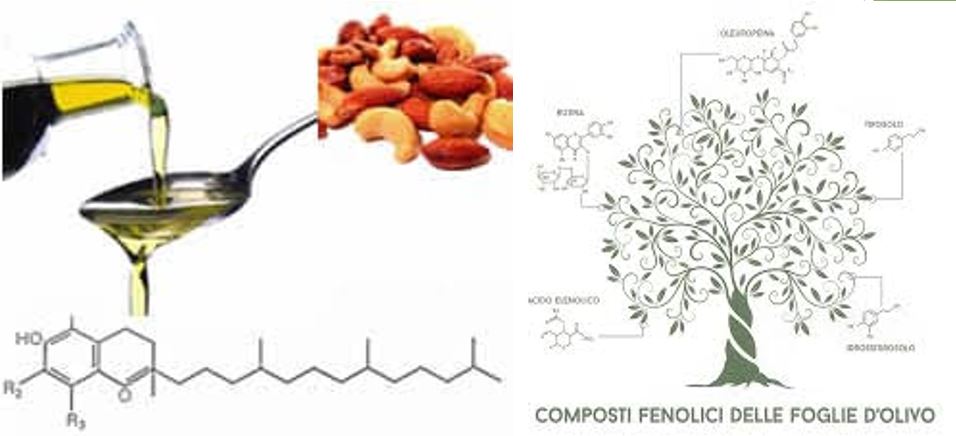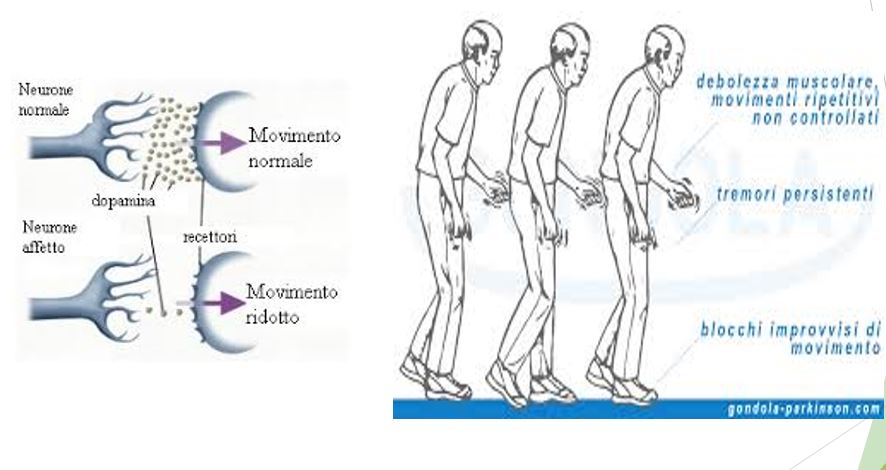The Association of Oil Masters, in collaboration with the municipality of Vetralla (Viterbo), has organized a cycle of six conferences on the theme "Oil and health, the prospects of the third millennium". The first meeting was with Prof. Francesco Violi, Director of the Department of Internal Medicine and Medical Specialties of the La Sapienza University of Rome, who recalled the benefits of the Mediterranean diet underlining how to regularly use extra virgin olive oil in the diet follows a decrease in the mortality rate due to cardiovascular events.
THE RESEARCH OF PROF. FRANCESCO VIOLI
Extra virgin olive oil and diabetes
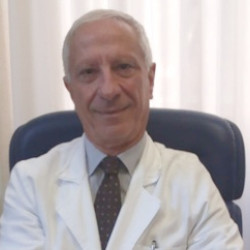
The professor. Violi described the results of the research conducted by his team on 30 patients with impaired fasting blood glucose (IFG), who were randomly administered a meal containing or less 10 g of EVO (extra virgin olive oil). . Before lunch, 60 minutes and 120 minutes after lunch, a blood sample was taken to measure: insulin, Glucagon-like peptide-1 (GLP1), dipeptidyl-peptidase-4 (DPP4) activity, triglycerides (TG), total cholesterol , HDL-cholesterol and Apo B-48. The results were surprising: the subjects who had taken the 10 g. of extra virgin olive oil showed a lower blood glucose increase of about 20 mg / dl at 60 and 120 minutes after a meal compared to those who had not taken EVOO. This is confirmed by the increase in insulin production in subjects who had taken 10 g. of oil in the meal.
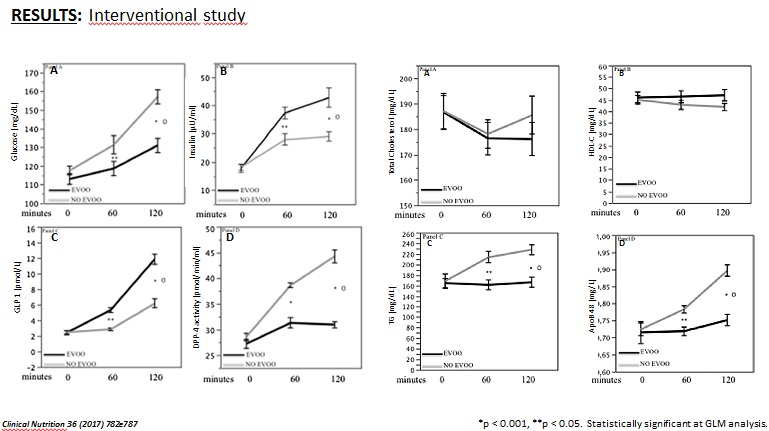
Results Interventional study
Oleuropein lowers blood sugar
All that remained was to "discover" the person responsible for these beneficial effects, identified by prof Violi in oleuropein: the main polyphenol present in the leaves and fruits of the olive tree (oleuropein is found in olive oil both in the form linked to a glucose molecule (glycoside), which in the non-glycated form - Source Wikipedia). Administered in the form of "medicine" (in tablets) oleuropein replicated the results of the study conducted through the intake of Evoo oil, verifying, underlined Prof . Violi, that "the consumption of 10 grams of extra virgin olive oil during meals reduces postprandial glycaemia by about 20 mg / dl, potentially preventing the disease in those who are healthy, but also helping to manage it better in those who are already diabetic"
Chocolate for diabetics? Yes, if made with olive oil
The conference ended with good news, especially for those with a sweet tooth and chocolate in particular. "Given the results, we thought - said Prof. Violi - to analyze whether the addition of oleuropein, which we had identified as responsible for the decrease in postprandial glycaemia, in the preparation of chocolate reduced the glycemic peak: the positive result obtained is very important. , because this enriched product allows diabetics to be able to enjoy a normal chocolate, without sacrificing flavor. Above all, it allows patients to exploit the potential beneficial properties of chocolate: a few grams a day of cocoa has a good antioxidant effect and protection of the cardiovascular system, which you will no longer have to give up just because 'diabetic' chocolate is difficult to find. or it's not as good as normal. "
CONTRIBUTION OF DR. SARA FARNETTI
What and what are functional foods?
What is a "functional food": a food which has been proven to have a healthy biological effect. The prince of these functional foods is extra virgin olive oil, because it acts on multiple metabolic functions at the same time. "I will not choose foods based on the calories they contain - said Dr. Farnetti - but rather based on the mix of elements that do not trigger any" toxic "hormonal reaction, meaning toxic" unsustainable "for ourselves, for our body. Some product mixes produce hormones that are harmful to the body, nitrogenous waste that burdens the work of the kidneys and liver, and so on, hence the concept that losing weight is not always good for you, the concept of losing weight is not healing. It is therefore necessary to associate the concept of eating with that of gaining health ”.
"The idea that" fat hurts is wrong - continues Dr. Farnetti - and fat must be fearlessly reintroduced into our diet. The fat contained in extra virgin olive oil is a good fat, woe betide if it were not included in our diet. A good plate of raw artichokes, which are very good for the liver, seasoned with extra virgin olive oil brings useful fats and does not trigger the insulin mechanism, which is the basis of weight gain (in practice it gets fat). Hormones are central to what you eat and food mixes that favor their negative positive action must be avoided or activated ".
Some fake news about food
- Pasta for lunch makes you lose weight: FALSE. It always depends on the mix of foods that accompany the pasta. If we eat 5 biscuits and an apple together with the pasta then we gain weight, while if we eat chicory and a handful of almonds together we do not.
- Water makes you lose weight: FALSE. Water is a food, if we drink 2 liters in the morning we only force renal diuresis and certainly we do not lose weight. Water is a moisturizer and not a diuretic.
- Mozzarella and tomato is a light and slimming meal: FALSE. Raw tomato is a bit acidic, it slows down the digestion of mozzarella, mozzarella is rich in salts, the liver works slowly in front of a cheese, it is an absurd mix for those who want to diet. Better to think differently: strips of meat with rocket or stewed broccoli, better than a dish that seems "unseasoned" but activates organs in a "toxic" way.
- Chocolate makes you fat: FALSE. Chocolate if made with a quality cocoa bean and especially if very dark (minimum 85/90%) not only mitigates hunger because it does not trigger insulin, so it behaves in the opposite way to a classic dessert (which would instead trigger processes inflammatory).
The minestrone makes you lose weight: FALSE. For example, if we put together beans and potatoes, we certainly do not lose weight, if we mix many low-calorie vegetables perhaps yes, but this is not necessarily good for the health of our body. Boiling many vegetables together, in addition to making them lose useful substances to the body, could lead to the formation of mineral crystals that we will have a hard time eliminating with the kidneys.
The importance of extra virgin olive oil in the kitchen
“It is therefore necessary to dose and mix foods based on their impact on our body - concludes Farnetti - and not based on popular beliefs,“ hearsay ”or“ it has always been done this way ”. For example, cooking in oil stimulates the biliary ability to eliminate cholesterol, which is useful at a functional level for gaining health. Cooking in oil gives me a useful situation because it improves the elimination of bile, has a laxative action, but above all an anti-insulin action and (therefore it does not increase visceral obesity). An example: bread and oil does not activate insulin, bread and ham do. Eating the first does not fatten, eating the second, in the long run yes (in addition to producing an inflammatory effect given by the continuous increase in insulin production). The idea of limiting extra virgin olive oil is therefore not good: bread together with oil becomes a food that yields fewer carbohydrates. In conclusion, to modulate the glycemic load of foods I can act by knowing the right mix of them, or even by exploiting cooking and preparation methods. In the latter case, extra virgin olive oil is the best ally we have in the kitchen: frying or sautéing food in oil creates protection for the food that preserves its nutritional qualities, better a fried potato well, in a good extra virgin olive oil, than a boiled potato! ".
WEBSITE OF THE DOCTOR SARA FARNETTI
CONTRIBUTION OF DOCTOR MASSIMO MARCHI

EVO and neurodegenerative disease
Thucydides, the famous Greek leader and historian of the fifth century BC, said that the peoples of the Mediterranean began to emerge from barbarism when they began to cultivate vines and olives. He certainly could not know all the properties and virtues of this product and yet he understood its importance, both for nutrition and for health.
The organoleptic properties, goodness and usefulness of oil in the kitchen are well known. However, not everyone knows that extra virgin olive oil has considerable and various beneficial effects on the body, thanks to the high content of monounsaturated fatty acids (oleic acid), polyunsaturated (linoleic acid) and antioxidant substances such as polyphenols and tocopherols.
Cardio-circulatory system: Olive oil intervenes by decreasing the level of total cholesterol and, at the same time, by raising the level of HDL cholesterol, ie the "good" one capable of "sweeping the arteries" from accumulated LDL cholesterol plaques.
Skeletal system: Olive oil, favoring the calcium fixation system, is indicated for the development of the skeletal system in children and to slow down the decalcification and weakening processes of the bones in the elderly. For the same reason, moreover, it plays a role of primary importance for nursing and gestating mothers who need a lot of calcium to carry out these delicate tasks.
Certainly the nervous system could not be missing, therefore the brain with all its functions.
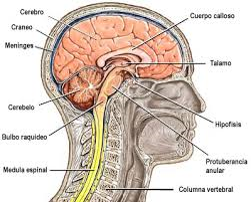
To better understand how olive oil can positively influence brain functions we must on the one hand keep in mind what are the substances contained in the oil that are useful for this purpose and on the other know a little more closely the conformation and the brain structure.
- "Luca" (Last Universal Common Ancestor) 3.8 billion years ago
- Two and a half billion years ago the first cells were formed
- A billion and a half years ago the first elementary living forms appeared
- Half a billion years ago the protofish
- 400 million years ago the reptiles and amphibians
- 300 million years ago the first neuron was formed (for the first time a squid, instead of having nerve centers scattered throughout the body, possessed a single central neuron).
The first evolutionary stage of man was to increase the number of neurons, the second to increase interneuronal contacts, the third to specialize the brain in functional areas, which distinguish the various brain activities.
The brain is therefore the organ responsible for the control and coordination of all organic functions. Unfortunately, as we will see, regardless of our will, the brain can "get sick and no longer work well".
The neuron is the basic unit of the nervous system, a highly differentiated and specialized cell for the collection, integration and conduction of nerve impulses. Two types of nerve fibers branch off from the cell body of the neuron, an axon and numerous dendrites. The axon is responsible for conducting messages that are sent from a neuron to other cells. Dentrites, on the other hand, transmit nerve signals from other neurons to the cell body of the neuron.
The synapse is the junction between two neurons specialized in the transmission of the nerve impulse. Between two neurons stands the so-called synaptic cleft. In this space, through the intervention of neurotransmitter chemicals, communication between nerve cells takes place.
Man at birth has about 100 billion neurons in his brain but they are all empty, in fact there is a lack of experiences, information, the deposit of these, and first of all there is a lack of connections between them. These connections neurons begin to build them from the first moment of life. The newborn's brain weighs about 400 grams and reaches 1000 grams in the first year of life. Growth then continues until early adolescence, when it reaches the average adult weight (1230-1275 for females and 1350-1410 for males). From the age of 25, about 1% of all neurons constantly die each year. It is up to us to move the acquired information, transferring it to the billions of neurons that we have never used.
With the information the neural ramifications are born, with the impulses going from the periphery to the center, which makes the associations, then the comparisons of what is stored, and then provides the answers with other impulses, based on the negative or positive experiences already made.
The anatomical part of the neuron that interests us most closely is the cell membrane. The membrane is a thin coating that delimits the cell, separates it from the external environment and regulates its exchanges with this. It is mainly made up of lipids and more precisely phospholipids, which make up 1/3 of the composition of the membranes of nerve cells and are therefore the building blocks of the brain. If the appropriate ones are missing or not, the messages between one cell and another do not pass normally, the membranes become more sensitive to toxic substances and die more quickly.
It is established that olive oil has a beneficial influence on the development of the nervous system and the brain, especially in the very early stages of childhood. In old age, however, it prevents the onset of diseases related to the slowdown and deterioration of brain functions.
A work by Francesco Sofi, nutritionist at the University of Florence, after analyzing several studies published over the years in the British Medical Journal, comes to the conclusion that the Mediterranean diet, of which an essential part is given by olive oil, is capable of to reduce the incidence of diseases such as Parkinson's and Alzheimer's by 13 percent.
The beneficial effects of olive oil on health are mainly due to the antioxidant action of some of its constituents such as monounsaturated fatty acids, mainly oleic acid, present in high concentrations, tocopherol (vitamin E), and polyphenolic compounds. Antioxidants bind to highly unstable molecules that are formed in the course of cellular oxygen metabolism, the so-called free radicals. Free radicals are waste products of cellular respiration and therefore derive from oxygen. If produced in large doses, or left to accumulate, they bind with essential components of the nerve cell, alter its structure and favor its degeneration.
The cellular tissues of the central nervous system are particularly sensitive to the harmful action of free radicals for many reasons. The brain, in fact, uses about a fifth of the body's total oxygen demand, and in proportion it develops a greater quantity of free radicals. In addition, brain tissue contains a very high amount of polyunsaturated lipids, the substrate most exposed to oxidative damage.
But above all, the neuronal cells are not particularly rich in those enzymes that make up the antioxidant defense barrier, nor in other substances such as vitamin E that act as "natural scavengers" against free radicals.
This is why a balanced diet that contains, among other things, the right amount of olive oil, helps to preserve health and in particular brain function.
Recently, a national epidemiological-clinical study called the Italian Longitudinal Study on Aging (ILSA) has shown that the daily intake of olive oil represents a protective factor in countering the so-called cognitive decline that affects people over 65, thus compromising various functions such as memory and learning, attention and concentration, reasoning and abstract thinking skills, language understood and expressed, for a duration of more than six consecutive months.
Oxidative stress, classically defined as the final effect of the imbalance between production and elimination of oxidizing chemical species, constitutes, as mentioned, one of the emerging health risk factors. In fact, not only premature aging is associated with it, but a series of morbid conditions, often of a degenerative nature and with a chronic course.
In particular, the Central Nervous System represents, for the reasons set out above (high oxygen consumption, high levels of iron, significant concentration of polyunsaturated fatty acids, etc.) one of the main targets of oxidative stress which, with good reason, is today considered one of the main cofactors of neurodegenerative diseases (Parkinson's disease, Alzheimer's disease, etc.). If we take Alzheimer's disease into consideration, it is interesting to know that a study by American researchers from the University of Chicago found that a compound in olive oil, oleocanthal protects against Alzheimer's dementia by altering the structure of neurotoxic proteins that occur. they believe they contribute to the debilitating effects of this disease.
A study, published in 2013 by researchers from the University of Louisiana in Monroe, concluded that high amounts of oleocanthal decrease the accumulation of beta-amyloid in the brain, a major feature of Alzheimer's disease.
Alzheimer's disease, whose name derives from Alois Alzheimer, the doctor who named this form of cognitive decline he studied around 1910, is the most common cause of dementia. Between 50 and 70% of people with dementia suffer from Alzheimer's disease. It is a brain degenerative process that causes a progressive and global decline of intellectual functions associated with a deterioration of personality and relationship life. Alzheimer's disease affects about 5% of people aged 60 or over: in Italy there are estimated to be over 500,000 sick.
Parkinson's disease occurs worldwide and in all ethnic groups. The name derives from the studies of dr. James Parkinson who around 1917 described the syndromic picture as "agitating paralysis". Forty years later, Charcot again described this clinical condition, calling it "Parkinson's disease". It is found in both sexes, with a slight prevalence, perhaps, in the male one. The mean age of onset is around 58-60 years, but about 5% of patients may have a juvenile onset between 21 and 40 years. Before the age of 20 it is extremely rare. Above 60 it affects 1-2% of the population, while the percentage rises to 3-5% when the age is above 85. The structures involved in Parkinson's disease are found in deep areas of the brain, known as the basal ganglia (nuclei caudate, putamen and pale), which participate in the correct execution of movements (but not only). Parkinson's disease occurs when the production of dopamine in the brain decreases consistently. The reduced dopamine levels are due to the degeneration of neurons, in an area called the Black Matter (cell loss is more than 60% at the onset of symptoms). Also with regard to Parkinson's, there are some studies that show how some substances contained in olive oil reduce the risk of getting sick with this disease. In particular, Canadian doctors examined eight studies published in the world medical literature between 1966 and March 2005, to evaluate the possibility, or not, that a diet rich in vitamin C, vitamin E and beta-carotene (pro-vitamin A) the risk of getting Parkinson's. As a result, the intake of vitamin E carries out a preventive action against Parkinson's.
ALS, Amyotrophic Lateral Sclerosis, also known as "motor neuron disease", "Lou Gehrig's disease" (named after the baseball player whose disease was brought to public attention in 1939) or "Charcot's disease" (from the surname of the French neurologist who for the first time described this pathology in 1860), is a progressive neurodegenerative disease that affects motor neurons, or nerve cells in the brain and spinal cord capable of regulating the contraction activity of voluntary muscles.
ALS is a rare disease (incidence: 1-3 cases per 100,000 individuals per year) and, in almost all cases, sporadic (familial forms are about 10% of the total number of patients). Probably it is a disease of multifactorial origin; currently the most accredited hypotheses to explain neuronal degeneration are two: an excitotoxic damage, due to an excess of Glutamate, and an oxidative damage, due to an imbalance between oxidizing and reducing substances in the microenvironment surrounding the affected motor neurons.
Basically the cause of ALS is unknown. An important step towards answering the question dates back to 1993, when scientists discovered that mutations in the gene that produces superoxide dismutase (also known as SOD1) were associated with familial ALS. This enzyme is a powerful antioxidant that protects the body from damage caused by superoxide, a toxic radical.

CONTRIBUTION OF PROF. EUGENIO SANTORO
Medicine and surgery in the Etruscan Time
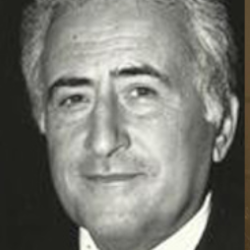
Professor Eugenio Santoro, specialist in oncological surgery and President of the San Camillo-Forlarini Foundation presented his latest book "Medicine and surgery at the time of the Etruscans", in collaboration with the National Etruscan Museum of Villa Giulia.
A multi-year and fundamental collaboration without which it would not have been possible to have news of the Etruscan people as there are no written texts other than news of the medicine of the Etruscans transmitted in a fragmentary manner by other Greek and Latin authors.
The archeology and the artifacts found have instead allowed a realistic, albeit partial, reconstruction of the medical art of that civilization, from the pathologies that afflicted it to the rigorously natural remedies they resorted to, in addition to the use of the thermal waters of which the Etruscan territories they were and still are particularly wealthy.
The study of Etruscan medicine leads us to take a leap into the past of about twenty-five centuries ago, when that people occupied central Italy from Veii to Mantua, until the Romans won the battles from the third century BC; from this period onwards there is no trace of the Etruscan people in history. However, speaking of surgery or surgical art at the time of the Etruscans is premature: medicine for the Etruscan civilization was a mixture of superstition and magic, managed by priest-haruspices whose function did not correspond to that of today's surgery.
In the Etruscan civilization, medical practice was considered to come directly from the will of the Gods, for this reason medical activities were entrusted to the Priests and Heads of Families. The proximity to religion facilitated the task of priestly medicine: if the result was positive it was considered a miracle, on the contrary, the bad outcome was attributed to the divine will, thus safeguarding one's charismatic position.
Primary interest of Etruscan society, then as still today was motherhood and childhood. There are many stone and terracotta statues preserved dating back to pre-Roman civilization representing the patron goddess of childbirth and the newborn. When the pregnancies were not successful and the mothers died due to complicated births, the child was surgically removed, the current caesarean section.
The health conditions of the Etruscans remain unknown as there are no written texts that speak of it. The little information comes from the archaeological finds of tomb paintings, or images shown on the pottery but also from the anthropological analyzes of the bone remains found. According to the type of archaeological finds, it would seem that the highest quality of Etruscan medicine concerned dentistry and obstetrics. Infant mortality and newborn malformations were one of the main problems of the time as sex was one of the pleasures of life, along with food. The Etruscan woman enjoyed great freedoms and was mistress of her own life. Since contraception was unknown and the problem of consanguinity was also unknown, the number of births was high and hereditary diseases were passed down through unions between relatives.
The teeth of the Etruscans represent a precious source of information on the characteristics of that people. There are many findings thanks to which it was possible to deduce that they had great care for the mouth, given the absence of dental caries. The large number of prostheses suggests how much the Etruscans cared about aesthetics and smiles, but also about the interest in food, thus defending the chewing activity. There are many museums in Italy today that preserve Etruscan dental material, whose solutions are still valid today.
The Etruscans were true artist-craftsmen with a high professional quality. They used gold and precious metals to make prosthetics and crowns suited to the needs with excellent results. If all this dental material has come down to our days it is because the Etruscans considered the corpse untouchable, so the dead were buried with prostheses, even if they were made of gold.
A serious problem affecting the duration of life whose expectations did not exceed forty years was that of infections that attacked wounds caused during work or in the home, including sexual intercourse and even the lungs in the form of tuberculosis. For all these pathologies, priestly medicine intervened, through magic and superstition, with quite positive results. Through the numerous votive offerings collected throughout Italy, other bone pathologies of the hands and feet such as rheumatoid arthritis and hallux valgus are also evident.
Over the years, the Etruscans developed a medicine based on the products of nature: they understood that in plants, vegetables and waters it was possible to find remedies against diseases. The etru medicine
FONDAZIONE SAN CAMILLO FORLANINI
CONTRIBUTION OF PROF. MARIA LISA CLODOVEO
Evo-luzione: from technology to the table
Maria Lisa Clodoveo, she is professor of food science and technology at the Interdisciplinary Department of Medicine of the University of Bari, on the occasion of the last meeting with Olio & Salute addressed the topic "Evolution: from technology to the table". The Professor cultivates a passion for restaurants seen as "ambassadors" of quality extra virgin olive oil and she illustrates the reasons why it is important to promote oil in restaurants.

Evolution: from technology to the table
The restaurant is the place of choice for developing a new experiential sphere of the science of cooking and of taste: laiogastronomy. The latter represents the possibility of tasting a dish, or an entire menu, overturning the simple paradigm of oil combined with the dish and creating "elaiocentric" recipes that on the one hand are able to offer authentic and identity combinations of a territory (many recipes have centuries-old traditions behind them and should be seasoned exclusively with oil from typical cultivars of the territory), on the other hand that they represent a gym of taste and culture capable not only of offering the protagonist of the banquet the satisfaction of the senses, but also of creating, through entertainment, a product culture and a corresponding value chain in the olive oil supply chain.
The laiogastronomy is entering the catering market by offering a new consumer segment and favoring the birth of new professionals, both in the kitchen brigade and in the dining room. Living an elaiogastronomic experience requires training as well as an economic investment, by the restaurateur, in the creation of the oil list that requires the purchase of the best oils in the national and international olive oil scene. The oil card, however, must maintain all the purposes of the other cards present in the restaurant business.
On the one hand, each card is in itself a sales tool, therefore a revolution in the way the product is presented is needed to make the diner accept a new expense item in the account. On the other hand, paper, with its promises to diversify visual, olfactory and gustatory perceptions, represents a promise that the restaurateur must be able to keep. In fact, it must be remembered that the oil is alive and transforms itself, especially if the bottle is opened and stored in unsuitable conditions. If the oil card declaims scents of freshly cut grass, artichoke or tomato, the only way to guarantee that the promise, or rather the contract, is kept is to open the small bottle in the presence of the customer, serving the oil in room (not adding it in the kitchen) and allowing the consumer to enjoy the hedonistic dimension generated by the hundreds of volatile compounds that are released upon contact between the oil and the warm dish. The cloud of aromas that is generated is a prelude and announcement of the taste that will be perceived upon tasting.
The oil trolley with dozens of bottles that have been open for some time is the premise of the failure of elo-gastronomy because it offers a range of poorly differentiated, oxidized and altered products.
To the skeptics who do not believe that oil can be sold in restaurants, generating fair value along the supply chain, capable of ensuring the right income for producers and millers, we should answer that thirty years ago, when water was served in the pitcher, no one would ever believe they could see the price of the bottle of mineral water in the bill.
Oil is truly a powerful element capable of transforming a banal dish into a dish capable of generating mouth water. Let's go back to the moment when (each of us lived it) we added the new oil to a winter legume dish. Here you are! It is precisely that sensation that is worth trying, refusing to add any oil from an anonymous cruet and demanding, at the restaurant, a high quality oil from a bottle with anti-topping cap and label.
PAGINA DELLA PROFESSORESSA CLODOVEO @ UNIBA
CONTRIBUTION OF PROF. RICCARDO AMIRANTE
"Ultrasound: more quality". Extraction of oil from olives with ultrasound
Professor Riccardo Amirante, author of the technology of extracting oil from olives with ultrasounds at the last meeting with Olio & Salute addressed the topic: "Ultrasound: more quality". After years of studies, an innovative plant was born which was tested and from which it emerged that the oil produced with the ultrasound extraction technique is of higher quality and healthier function. Today this plant is in production and is about to be sold on the market. Professor Amirante explains what are the advantages of the technology of extracting oil from olives with ultrasound.

The process of extracting virgin oil from olives: the limits of current technology
In the olive oil sector, the levers that guide the research and development of innovations are the need to favor, during the extraction process, the separation of the highest quantity of oil, and of the best quality, suitably modulating the complex series of physical transformations , physico-chemical, chemical and biochemical within the olive paste. The increase in yield and product quality are objectives, with the technology currently in use, in contrast, which cannot therefore be achieved at the same time, but which must be reconciled, developing solutions, to ensure fair profitability for operators in the sector.
Innovative solutions can be distinguished by the degree of novelty with respect to existing technology, organization and demand, in two different types: incremental innovations and radical innovations. Incremental innovations involve the improvement of a process, product or service with respect to a specific model or process that already exists.
Radical innovations represent a break with existing products or processes. Incremental innovations are very numerous, while radical ones are rarer.
If we consider the machinery and systems industry for the oil sector we can affirm that the real revolution, that is the first, and at the same time the last, radical innovation, is represented by the introduction of the centrifugal separation of the oil and the transformation of the obsolete pressure extraction system, characterized by low working capacity, high labor demand and poor hygiene standards, in the modern, highly effective and efficient “continuous” system. This innovation dates back to the 1970s and led to the need to combine the decanter, the horizontal axis centrifuge that continuously separates the oil from the olive paste, with the malaxer, a machine that operates in batches and which is necessary to favor, thanks to the heat exchange and agitation, the coalescence of the minute droplets of oil released by pressing into drops of larger diameter, sufficient to be separated in a centrifugal field and guarantee satisfactory yields.
That kneading was a "necessary evil", as it has always been based: heating and stirring. We can consider, with good margins of certainty, that every technological effort based on the optimization of 9 of 16 these factors has reached the apex of applicability and that the machines currently on the market are the best performing possible. There are few prospects for improvement that can be technically pursued if one perseveres with the same well-established approaches.
Looking at the characteristics of the oil by-products, it is clear that there is still room to increase the effectiveness and efficiency of the machines intended for oil extraction. And here it is perhaps the case to dwell on the terms "effectiveness" and "efficiency", often used interchangeably as synonyms, but which actually reflect two distinct concepts. Effectiveness, in fact, indicates the ability to achieve the set goal, while efficiency evaluates the ability to do so using the minimum indispensable resources.
In the case of oil plants we can say that a technology is effective if it is able to increase the yields and the content of antioxidants by reducing the losses in the by-products, and is efficient if it achieves these objectives in a sustainable way, reducing energy costs with an advantage for business economies and the impact on the environment.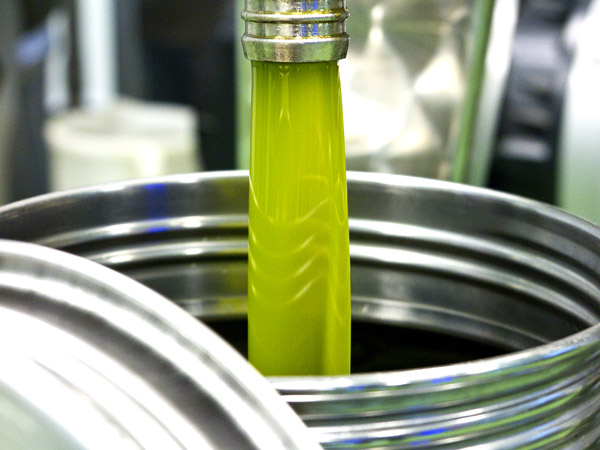
Benefits of ultrasound in the extraction of extra virgin olive oil
Effectiveness and efficiency of the extra virgin olive oil extraction process can be achievable objectives also thanks to the use of emerging technologies. Emerging technologies are technologies available at an experimental level, which have already shown advantages in other fields of application and whose developments are now considered extremely promising in the coming decades.
In the case of the extra virgin olive oil extraction process, the emerging technologies must guarantee to obtain two effects simultaneously: mechanical, for the breaking of the cells passed intact to the crusher and the release of further quantities of oil and minor compounds, and thermal, for accelerate, by means of the hydrophobic effect, the coalescence of minute lipid droplets.
Among the emerging technologies eligible to become full-scale plants in the oil sector in the near future, the multidisciplinary research group, born from the collaboration of the University of Bari - Prof. Maria Lisa Clodoveo - and the Polytechnic of Bari - Prof. Riccardo Amirante, has identified ULTRASOUNDS, creating the first industrial scale plant implemented in an oil mill which has allowed to increase, for the first time ever and simultaneously in the history of oil plants, the yield and polyphenolic content of the extracted oil.
The ultrasonic treatment of olive paste is fully classifiable as a mild technology, that is, it is a delicate technology that allows to combine, for the first time in the history of the development of oil plants, the increase in yield (about 1 kg of oil per 100 kg of olives) with an increase in the content of polyphenolic substances, minimizing thermal and oxidative damage, certified by chemical analyzes aimed at product classification and by the panel test. The ultrasonic treatment of olive paste is a radical innovation since it is the only process that has made it possible to extract more oil and with a higher polyphenolic content than the known technique, at plant costs that are repaid widely during the first campaign. '' use thanks to the greater quantities of oil with higher commercial value.
Why was ultrasound combined with heat exchange?
A machine that looks to the future cannot ignore the assessment of the changes underway in the olive oil sector: the progressive advance of the harvest time and the inevitable climatic changes that mitigate autumn temperatures make the application of low temperatures increasingly necessary. The Sono-Heat-Exchanger has been designed by dimensioning both the heat exchange for heating and cooling, in order to allow the expert miller the maximum modulation of the product quality.
A surprising effect found concerns sensory evaluation. The result of the panel test shows an advantageous and unexpected effect. As can be seen, the graphs of the sensory analysis reveal 13 of 16 that the oil subjected to ultrasound treatment, while maintaining the varietal imprint faithful to the oil extracted with traditional continuous technology (with kneading), has a more harmonious organoleptic profile under the aspect of bitter and spicy, which makes the product more acceptable to consumers.


